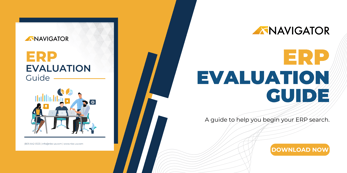
Software Evaluation: Time to Reframe How You Evaluate
Indirectly, ChatGPT helps us answer the question: What’s the best software solution?
ChatGPT doesn’t give us the answer directly, but its inadequacy with such questions hints at how we should be looking at software evaluation.
Much of the business community is currently looking at ChatGPT and thinking about both how it will change the world, and how it will change their business. We’re pretty sure you’ve given ChatGPT a spin. We certainly have.
What most of us find is that generative AI such as ChatGPT has gotten impressively capable, answering many questions accurately enough that Google search and numerous industries are nervous about the future. But many of us also have found limitations with ChatGPT. One of those limitations is the certainty that ChatGPT brings to its answers, even when the data is inaccurate or there are multiple perspectives.
The problem is that ChatGPT often looks for a definitive answer to nuanced questions, leading itself and us down the wrong path.
This limitation with ChatGPT hints at a problem often faced during software evaluation: Looking for the definitive “best” solution for a software category when no such overall best solution exists. The “best” solution depends on the needs of the particular business.
Read 'ERP Evaluation: Are you looking at price or value?'
Reframe: Needs-Based Software Evaluation Instead of Category Best
Questions such as “What’s the best CRM?” or “What’s the best ERP?” lead us down the wrong path during software evaluation. It is like asking for the best utensil. Is a spoon the best, or a knife? What about forks?
Obviously, the answer to this question depends on how it will be used. For chicken noodle soup, we want a spoon because a knife just won’t cut it. At the same time, a spoon won’t serve us well for cutting a loaf of ciabatta bread. Determining the best utensil depends on the need because there isn’t one right answer for all use cases.
Instead of looking for a definitive answer to the question, “What’s the best utensil,” we should start by asking why we need a utensil. Once that is established, only then can we accurately decide which utensil to choose.
This is the same situation when evaluating software solutions. There isn’t one correct answer for all needs. The right solution for a business, with multi-functional software at least, depends on the problems that a business is looking to solve.
It isn’t about finding the best software in a category, it is about finding the right software for solving specific business problems. Because there isn’t truly one best solution for all needs.
So let’s reframe the question. Instead of asking, “What’s the best software?” and approaching evaluation from that perspective, businesses should be asking, “Which software solution solves this specific set of business needs?”
The correct way to buy software is to start with a problem statement, in other words. Software evaluation is about solving a logistics problem, not actually about buying software. The software is a solution to a specific set of problems, it isn’t the end unto itself.
This reframe is shifting from software comparison to problem resolution. Software evaluation is about solving specific problems within a business.
Feature Temptation: Wants vs. Needs
This shift in perspective also helps businesses avoid the temptation of selecting a software solution based on features that aren’t actually needed.
When businesses evaluate big, multi-functional software systems such as ERP, there is a vast array of functions and features that are useful but not actually necessary for a given business. These functions and features can inspire new use cases, optimizations, and sometimes even additional lines of business that were not in the initial problem statement.
These useful but unnecessary features serve as a temptation during software evaluation. They encourage criteria creep and a wishlist not based on current needs. Features that are nice to have but not part of the initial problem statement expand the scope of the evaluation, making selection harder and longer.
Get the 'ERP Evaluation Guide'
More damaging, these tempting but unnecessary functions and features often lead businesses toward selecting the wrong software solution. Instead of strictly evaluating a software solution against the needs of the company, the selection process becomes about the solution that offers the most exciting features. This can muddy the waters and shift selection away from the best solution for solving the actual needs of the business.
By starting with a problem statement as the criteria for software selection and sticking to it during evaluation, businesses both improve evaluation time and help ensure they are choosing the best software for the purpose.
Instead of basing software selection on a potentially endless list of wants, businesses are choosing software based on actual needs.
Do You Know Your Actual Needs?
Because needs assessment is critical for ERP software selection, we’ve developed a free workbook for defining those needs as the first step toward ERP software selection. You can download our free ERP Evaluation Guide here.
For specific guidance on needs assessment, you also can contact one of our experienced ERP consultants by calling us at (801) 642-0123 or emailing info@nbs-us.com.
